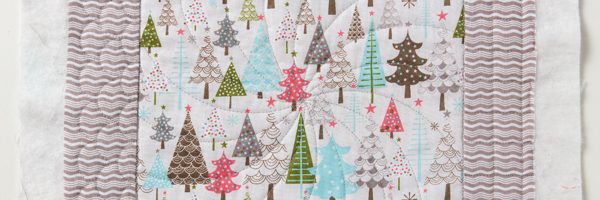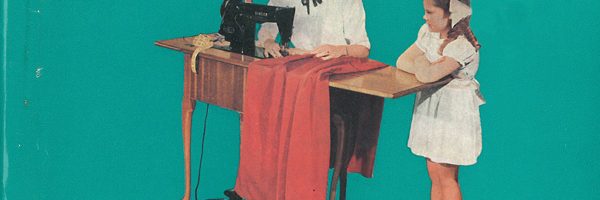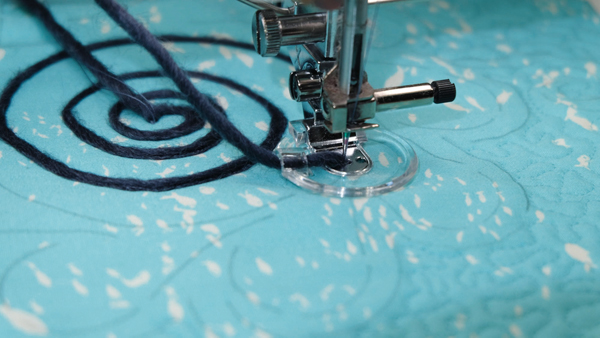
Free Motion Couching Feet with Michelle Marvig
A visit to any quilt show will demonstrate the wide variety of fabrics, fibres and techniques that can be used when making a quilt. If you wish to add another dimension to your next project, you might consider trying couching.
Driven by Michelle Marvig
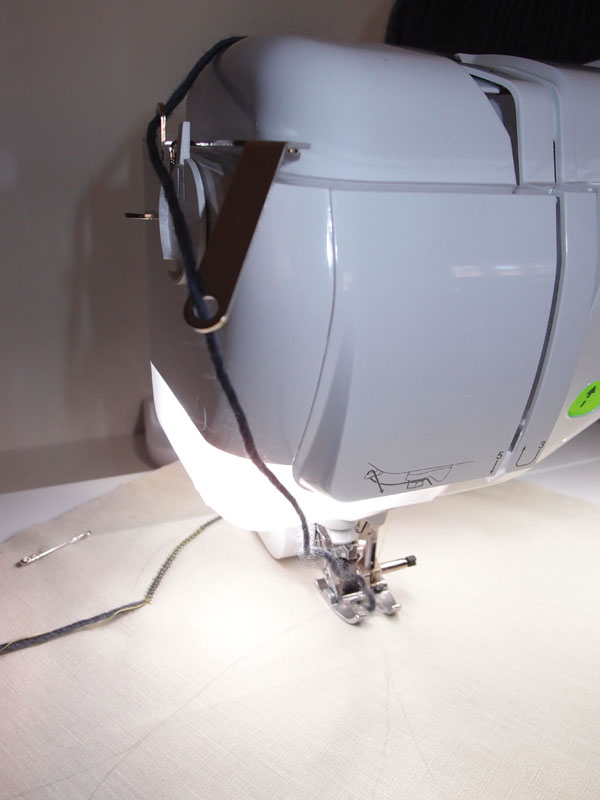
A very old embroidery term, couching describes a method of placing threads or cords on a material base and stitching through, or over, these cords to attach them to the surface. Matching or contrast thread was used to couch. Many ancient civilisations used this technique to add embellishment to garments, artworks and household pieces.
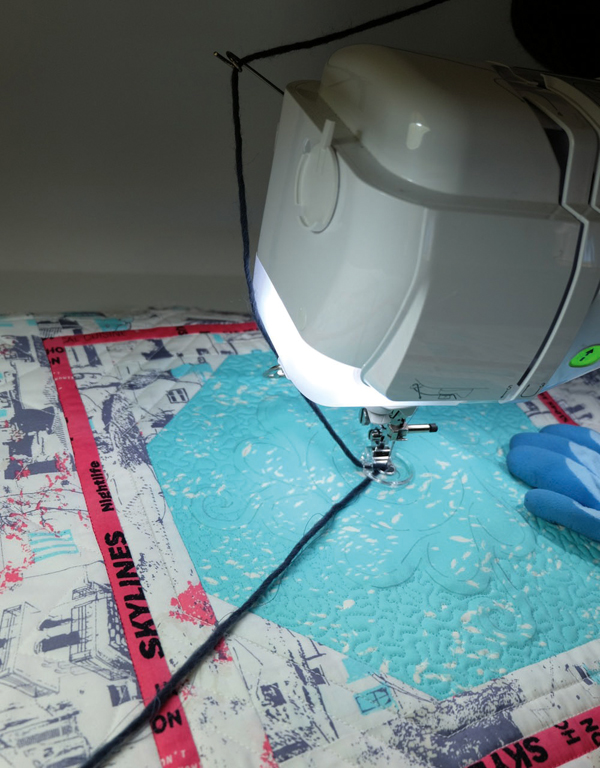
Learn raw-edge machine applique, reverse applique and machine quilting!
Historically couching was completed by hand, and still can be today. But if you love your “electric needle” (sewing machine) as much as I do, special couching feet are available. In general, two different feet are offered to facilitate couching on the sewing machine. One style of foot is used with the feed dogs raised, the other is for free-motion couching with the feed dogs lowered.
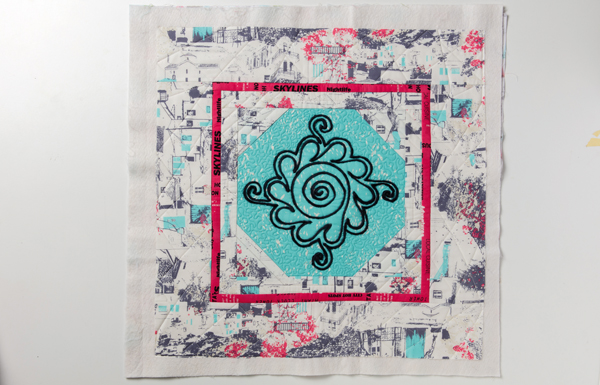
Many raised-feed dog couching feet feature a hole in the front of the foot through which yarn can be fed to be couched, accompanied by a groove under the foot to take the bulk of the yarn and the stitch. The simplest stitch used to attach the yarn is zig zag, but experiment with thread types, colours and stitches for diverse effects. On my machine, a Brother VQ3000, an attachment is available to turn my dual feed or walking foot into a couching foot.
It has a hole at the front, but also comes with yarn guides to hold the thread at an optimum direction to feed into the front of the foot. I had a lot of fun playing with different threads and stitches before I started making the cushion panel. For the cushion panel I fused the triangles in place and couched the red yarn over the raw edges, using a triple zig zag. I opted for low-contrast stitching because of the design. My yarn ends will be anchored in the seam allowance later, but I felt it was easier for you to see the construction if the cushion was not complete.
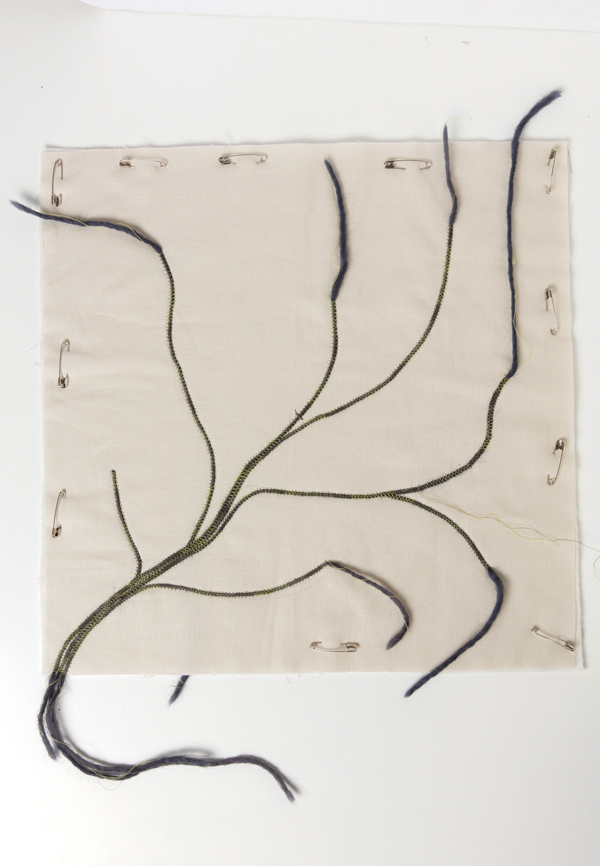
Join Monica Poole as she shows you four different ways to finish off your quilts
Free-motion couching is a different kettle of fish. You can even get a couching foot for a Handi Quilter! Most of these feet look similar to your regular free-motion feet, but with yarn guides for the machine, or possibly in the base of the foot. The stitch opening is smaller and most use a straight stitch to couch the yarn to the surface.
Speed, yarn thickness and even feeding of the yarn greatly affect the quality of the result. For all couching, definitely set up a practice piece and test out the settings for your machine. They could vary with each project. On my machine, I needed to move the needle position to couch thinner yarns, otherwise the machine missed stitching the yarn. Uneven feeding of the yarn also pulled the yarn from the ideal placement and lengths could be missed.
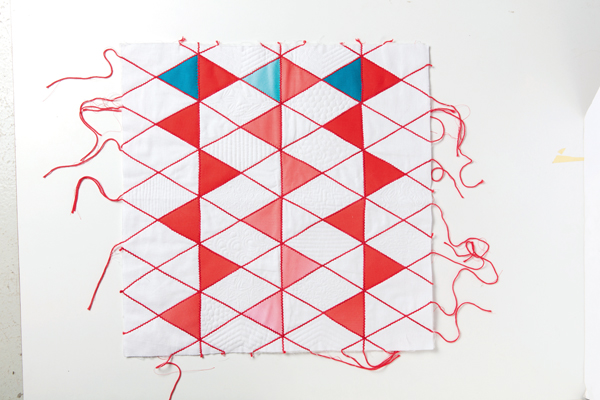
For the second sample, I pieced the cushion front and then traced a commercial stencil to get my design. I layered up and completed the straight-line quilting to stabilise, before I did the free-motion work. The yarn I chose to use was relatively thick and I left a tail at either end of the quilting, which I threaded through and tied off after completing the couching.
In both my samples I have chosen to quilt and couch at the same time — why not make the process faster? It is not necessary to do so as the feet will work on a single layer of fabric, but consider the weight of the couching and embroidery if you do not have a layer of batting — it may be unbalanced by the weight of the base fabric.
A layer of stabiliser would help if this is the case. Many YouTube tutorials showcase these feet on a variety of sewing machines, or your local machine dealer would be happy to demonstrate for you. Who knows what techniques you might want to use on your next quilt?
Happy stitching!

